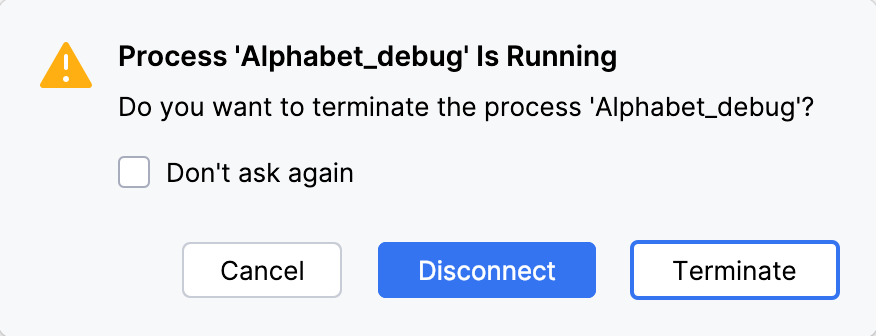Tutorial: Remote debug
In this tutorial, we'll learn how to attach to a local or remote process using the IntelliJ IDEA debugger.
Overview
Remote debugging lets you control and inspect a Java program running on another machine as if it were local.
To do this, you first start the application on the remote computer and configure it to accept debugger connections by adding a special VM option. This option makes the remote JVM wait for incoming connections from a debugger.
Once the remote app is up and listening, you use your local machine to start a debugger in “attach” mode. This connects the IntelliJ IDEA's debugger to the remote application over the network, allowing you to debug it.
Create a project
First, let's set up the project that we'll be debugging – a simple program that outputs the capital letters from A to Z.
Create a class named
Alphabet.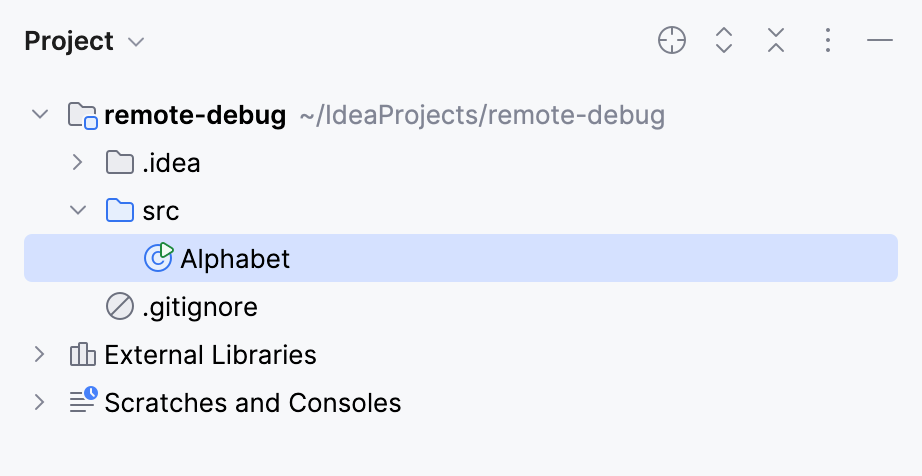
In the body of the
Alphabetclass, paste the following definition of themainmethod:public static void main(String[] args) { System.out.println("Starting"); for (char c = 'A'; c < 'Z'; c++) { try { Thread.sleep(2500); } catch (InterruptedException e) { e.printStackTrace(); } System.out.println(c); } System.out.println("Complete"); }
Create run configurations
To allow the debugger to attach, we need to run the application with special parameters (more on them shortly). In this tutorial, we'll set up a run/debug configuration that will do this for us. This way, we are going to have two run/debug configurations: one for running the app and another for attaching to it.
Set up the debugger
First, we need to set up the run/debug configuration that will be used for attaching to the host application.
In the main menu, go to or press Alt+Shift+F10 then 0.
In the Run/Debug Configurations dialog, click the Add New Configuration button
and select Remote JVM Debug.
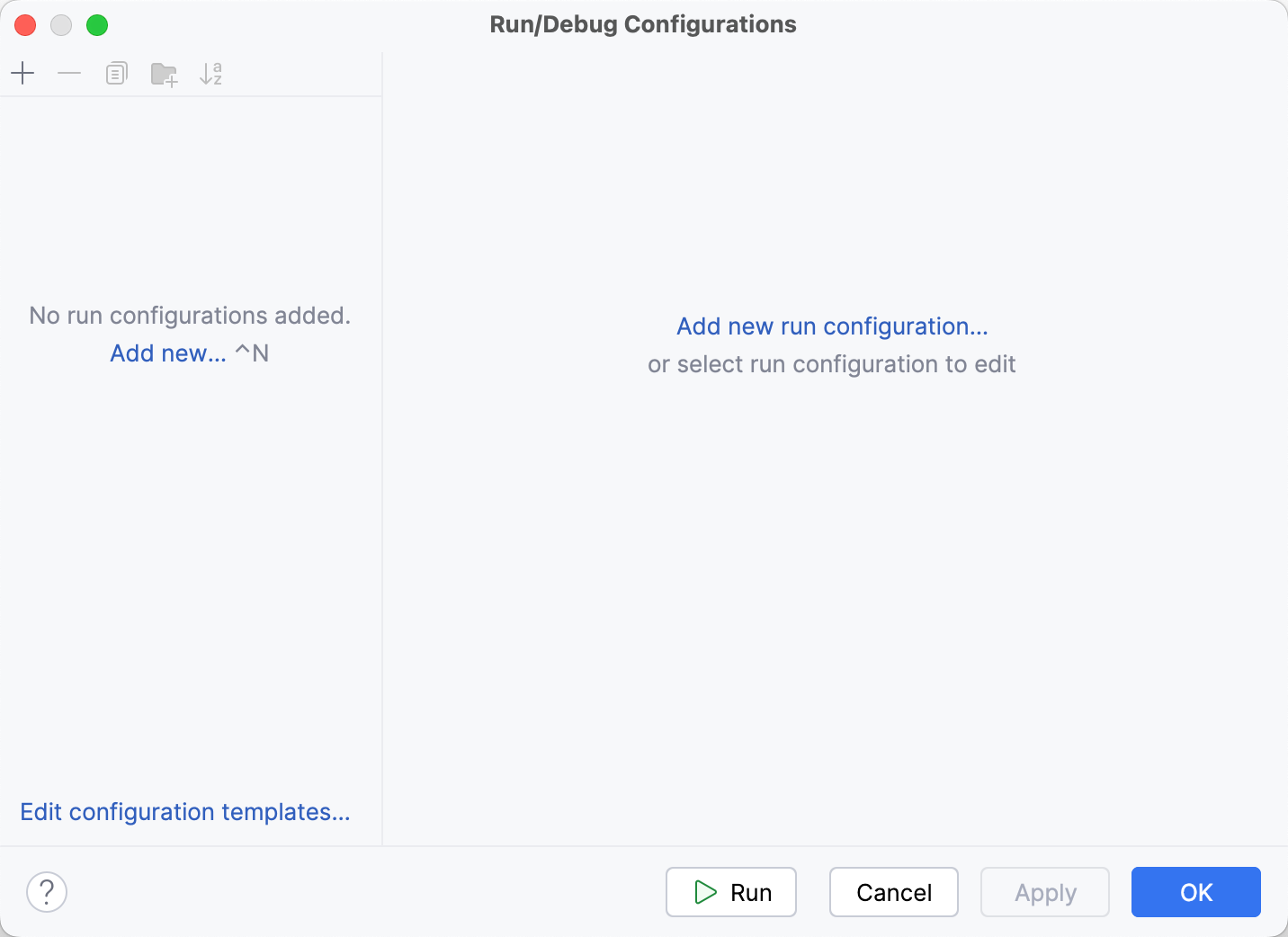
Configure/use the following properties:
Name: define a convenient name for this run/debug configuration or keep the default value.
Host: the address of the machine where the host app will run. Since we are running it on the same machine, it needs to be localhost. If the program was running on another machine, we would specify its address here, for example: 192.168.17.43.
Command line arguments for remote JVM: the VM options that the host application needs to be started with. We will use them in the other run/debug configuration. You can copy them now or get back to this field later.
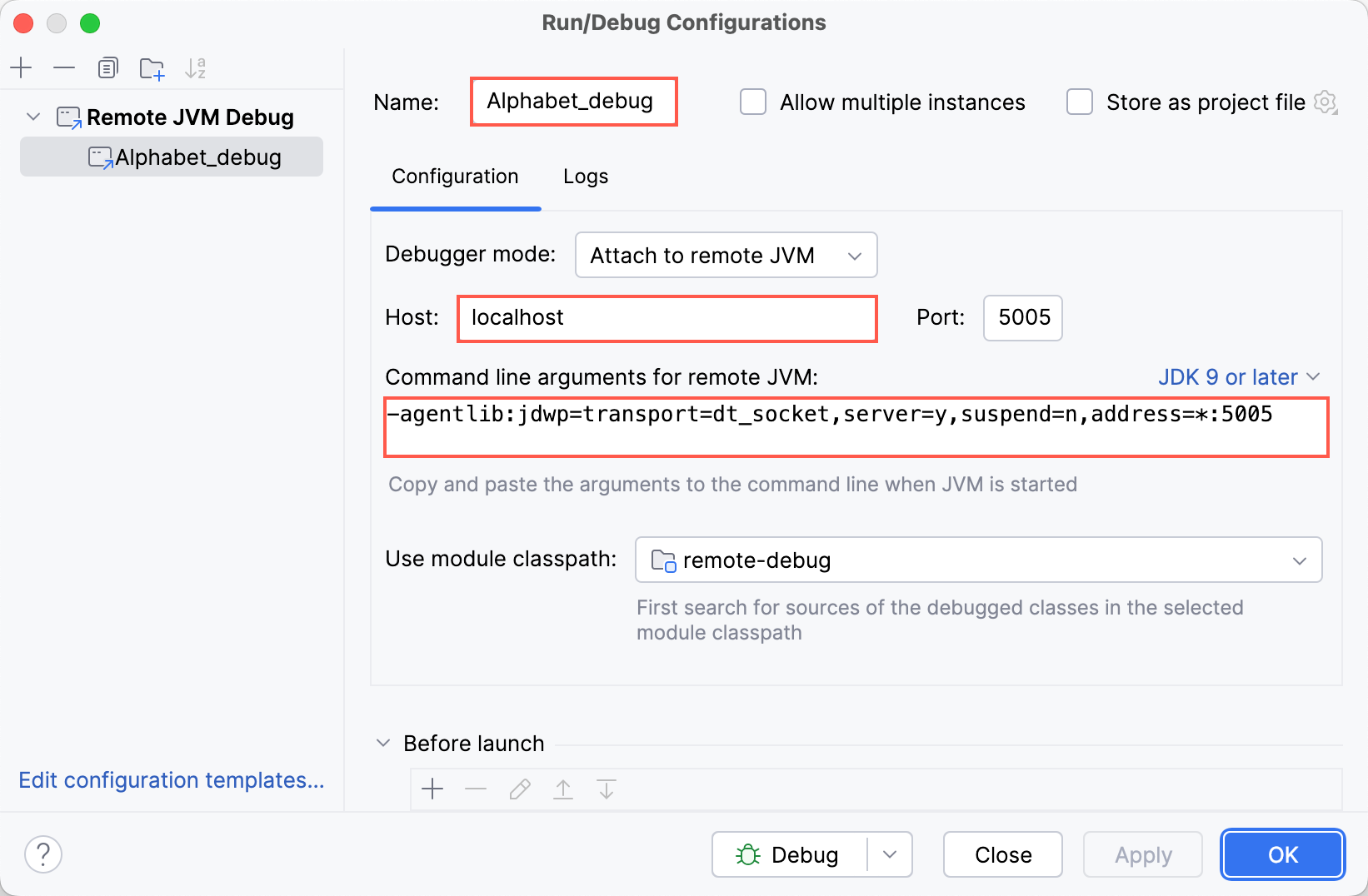
Click Apply.
Set up the host app
There are no restrictions on how exactly the host application needs to be run. For example, you can package the app as a JAR and run it using the following command line:
In this tutorial, we are going to use a run/debug configuration that will do most of the work for us.
Right-click anywhere in the body of the
Alphabetclass. Select More Run/Debug, then Modify Run Configuration.Click Modify options, then select Add VM options. In the VM options field, paste the options that you copied from the debug configuration.
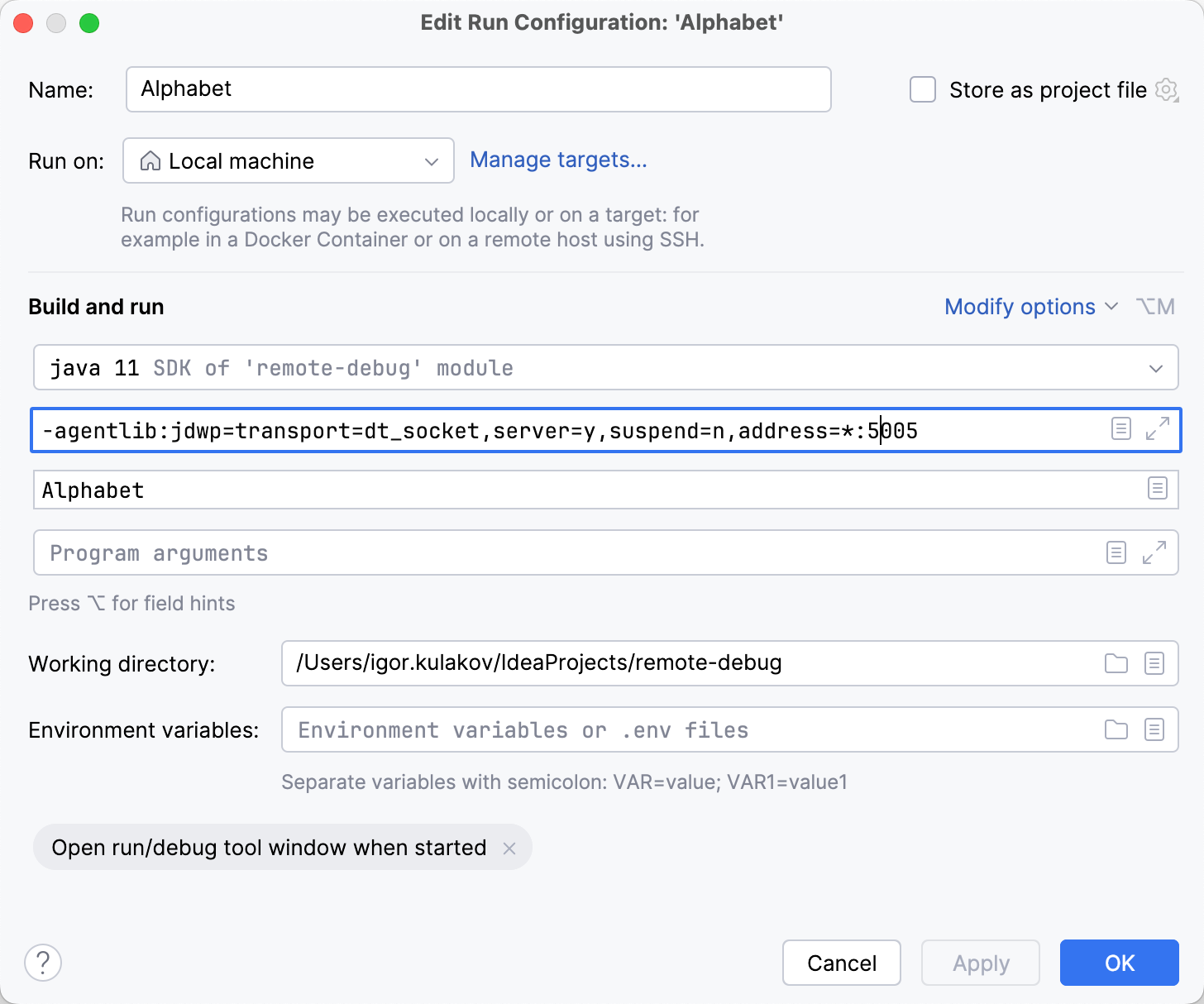
Click Apply.
Run the app
Now that we prepared all that is necessary, we can proceed with running our application.
Press Alt+Shift+F10 and select
Alphabet.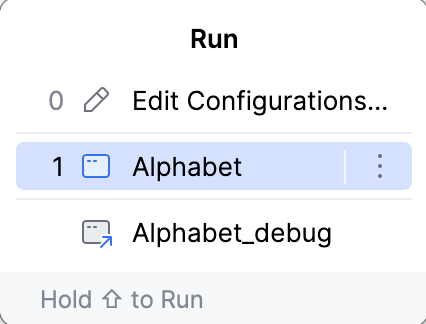
In the program output, the first line will be:
This indicates that we have enabled the debug agent and our program is ready to accept incoming debugger connections.
If the line doesn't appear, ensure the port is not being used by another application or blocked by a firewall or security settings.
Attach to process
Click the gutter at line 10 to set a line breakpoint there.
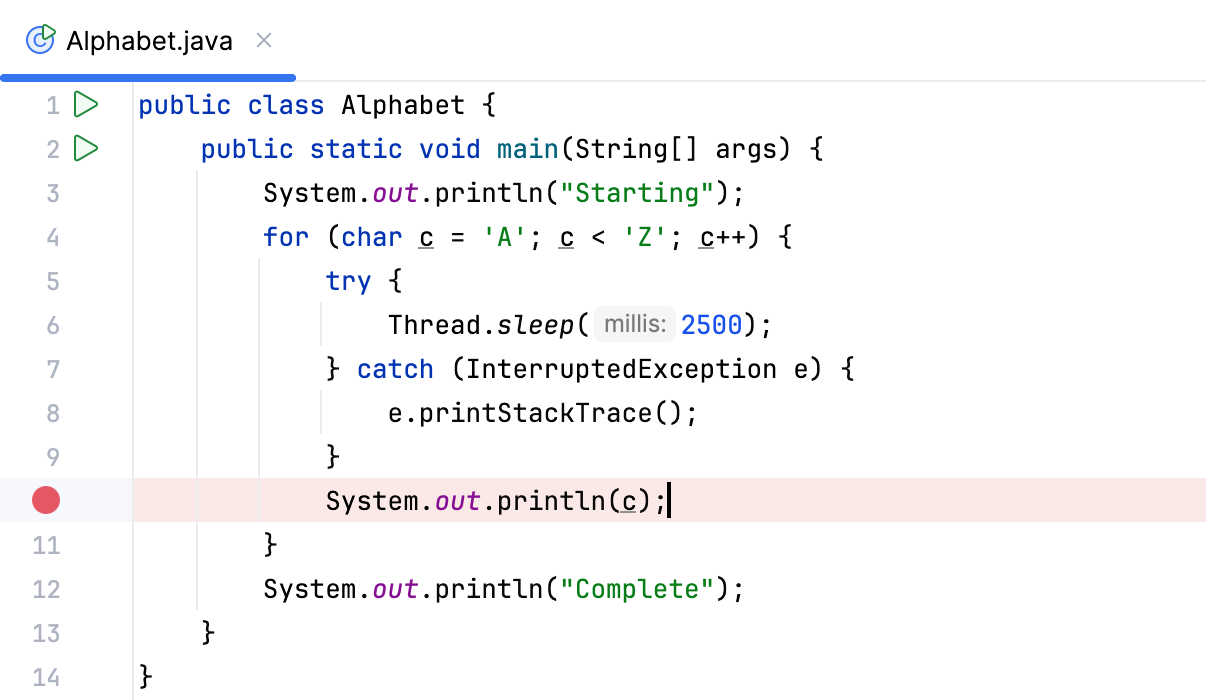
Press Alt+Shift+F9 and select your remote debug configuration.
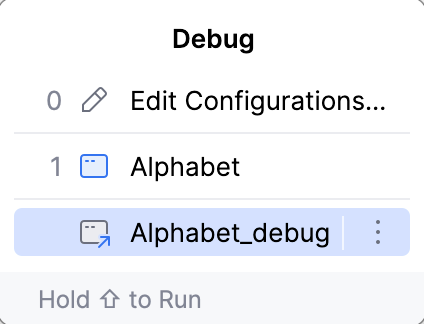
As the result, the program is suspended at the breakpoint, and you can perform any debugging actions like stepping, expression evaluation, and so on.
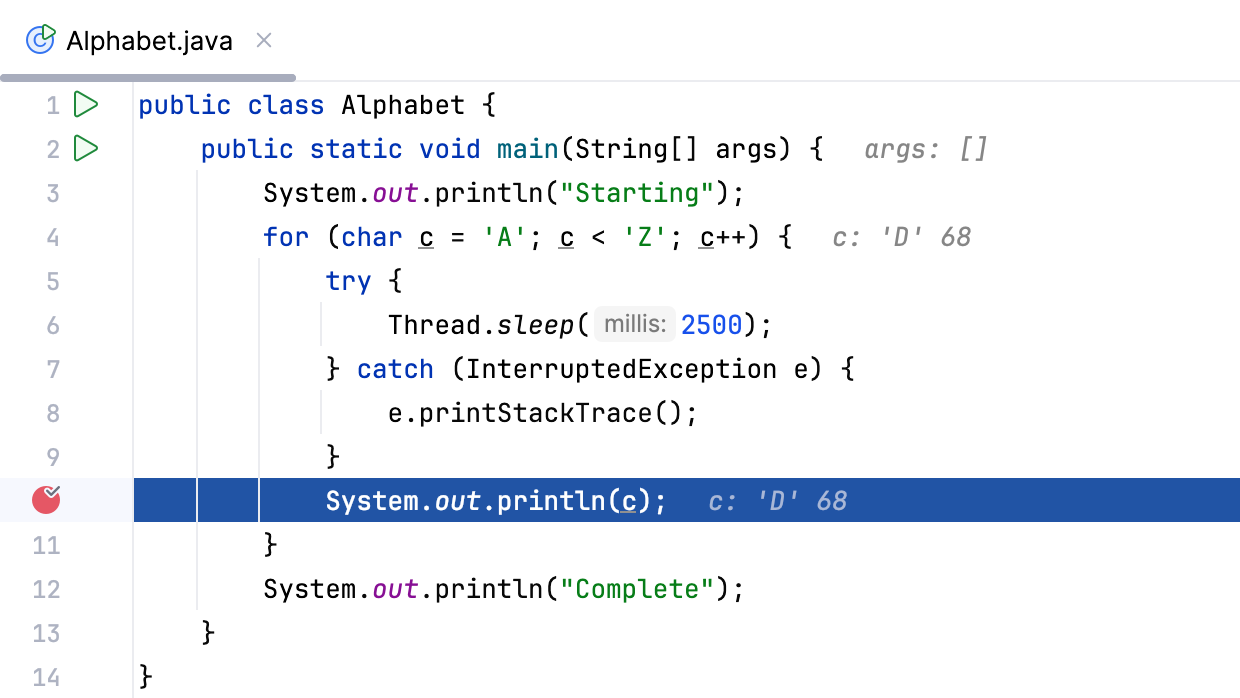
The debugging process is the same regardless of how and where your app is launched. After you have connected, you can use the same debugger features as if you were launching your app right from IntelliJ IDEA.
Close the debug session
Close the corresponding session tab in the Debug tool window.
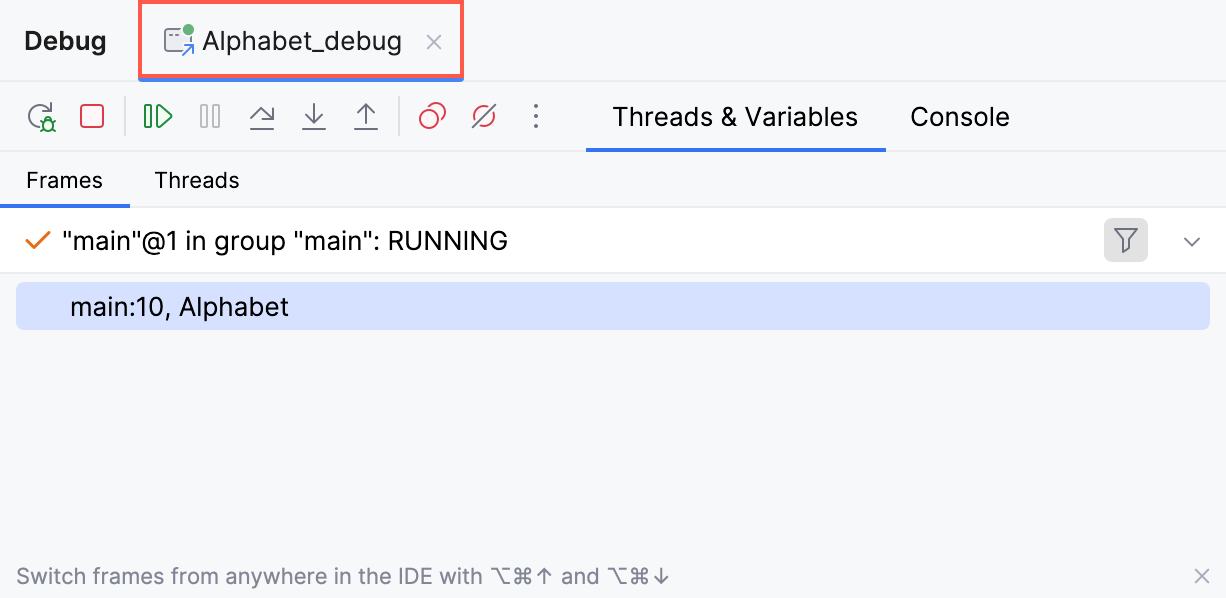
Select if you want to terminate the process or disconnect from it.
Disconnect stops the debug session while the process continues to run
Terminate stops both the process and the debug session
